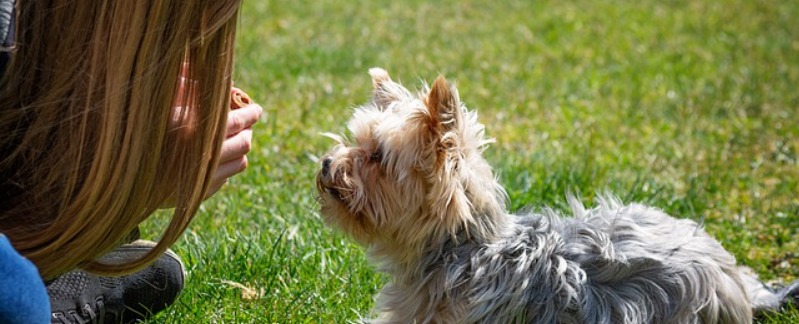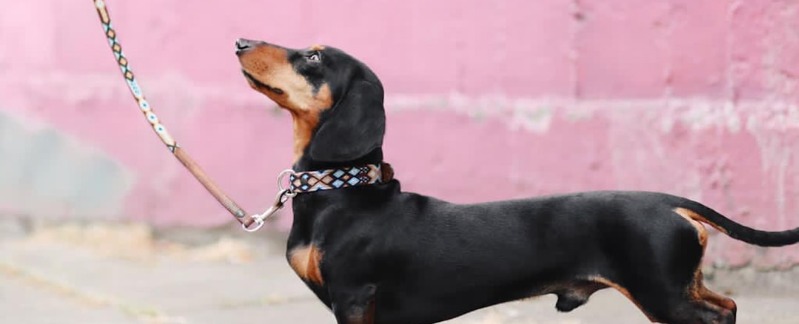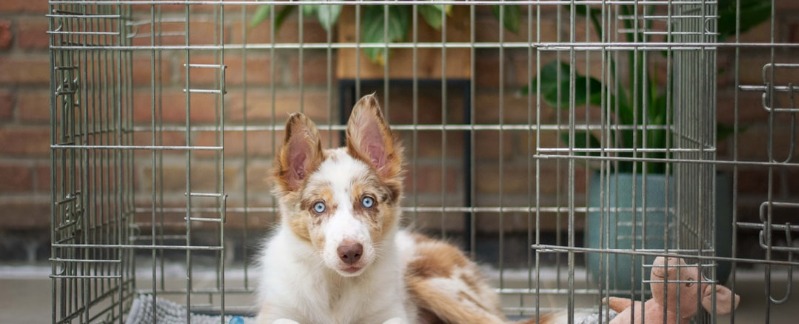Indoor confinement options will help you housebreak your dog, as well as help prevent property damage from inappropriate chewing. You will probably want to crate your dog when you’re out of the house and when you’re home but can’t pay attention to what your dog is doing. Gates can be used both to keep your dog in the same room with you and to keep him out of off-limits areas. Finally, tethers and draglines can help you control your dog by limiting his options and keeping him close to you. Upcoming chapters will give you ideas for how to use these management devices to your best advantage.
Dog Crates
A sturdy crate is your best friend (other than your dog, of course) and the easiest way to keep your dog from being destructive. When it comes to house-breaking, a crate is practically an essential. Crates come in a few basic types. The most common are plastic airline crates and wire crates. Which type you choose will depend on your budget, décor, and to some extent, your dog.
Houdini Dog, master of escape, was able to break out of ordinary airline and wire crates! Specialty crates, made from welded sheets of aluminum, can contain even the most determined escape artists. See Appendix A for suppliers.
If you don’t want to have to buy successively larger crates as your dog gets bigger, get the size that will fit him as an adult. Wire crates usually have panels that can be used to adjust the size of the crate. To determine what size crate to get, figure out how much space your dog needs to stand up, lie down, and turn around, without too much room to spare.
If your budget allows, you might consider getting two or three crates, so your dog has a safe place to be in your car or in a second room, like your bedroom at night.
Dog Gates
Gates are an easy way to give your dog a little more space without giving him the run of the house. Use gates to control space, keeping your dog in and out of specific areas you designate. Gates come in a wide variety of sizes, functions, and prices. From the simplest, old-fashioned, expandable baby gate you can get at your local box store for around $10, to a more elaborate gate with a door that opens when you step on a lever, there is a size and type to suit practically any need and budget.
If you have an open floor plan, you may have to get creative with your gating choices. You can easily make custom gates from PVC lattice fence panels available at most major home-improvement stores. The panels come in several sizes, but the 4″ × 8″ sections are probably the most versatile. Attach them together with cable ties or cut them for a custom fit.
Tethers and Draglines
Tethers and draglines are tools to help you keep your dog under control when you are in the same room with him. Tethers are short (2–4 feet) and are used to keep the dog in one specific area. One end is attached to your dog’s collar, and the other end is attached to something stationary — an eyehook in the baseboard, a sturdy piece of furniture, or you (find sources of chew-proof tethers, or you can make your own from vinyl-coated steel cable available from your home-improvement store).
While you’re buying tethers or the material to make them, pick up some leash snaps and some of the soft and strong nylon mountain-climbing rope to make your draglines (and tethers, if you’re not using the steel cable). All of these supplies are usually on the same aisle. You will want enough of the rope to make several draglines — 6 to 8 foot lengths for inside, and 25 to 50 foot lengths for outside.
After securely attaching the leash snap to one end, tie a couple of knots along the length and at the other end (so it doesn’t slide out from under your foot if and when you need to step on it). Draglines are an easy way to give your dog a little more supervised freedom while enabling you to get control of him quickly.





